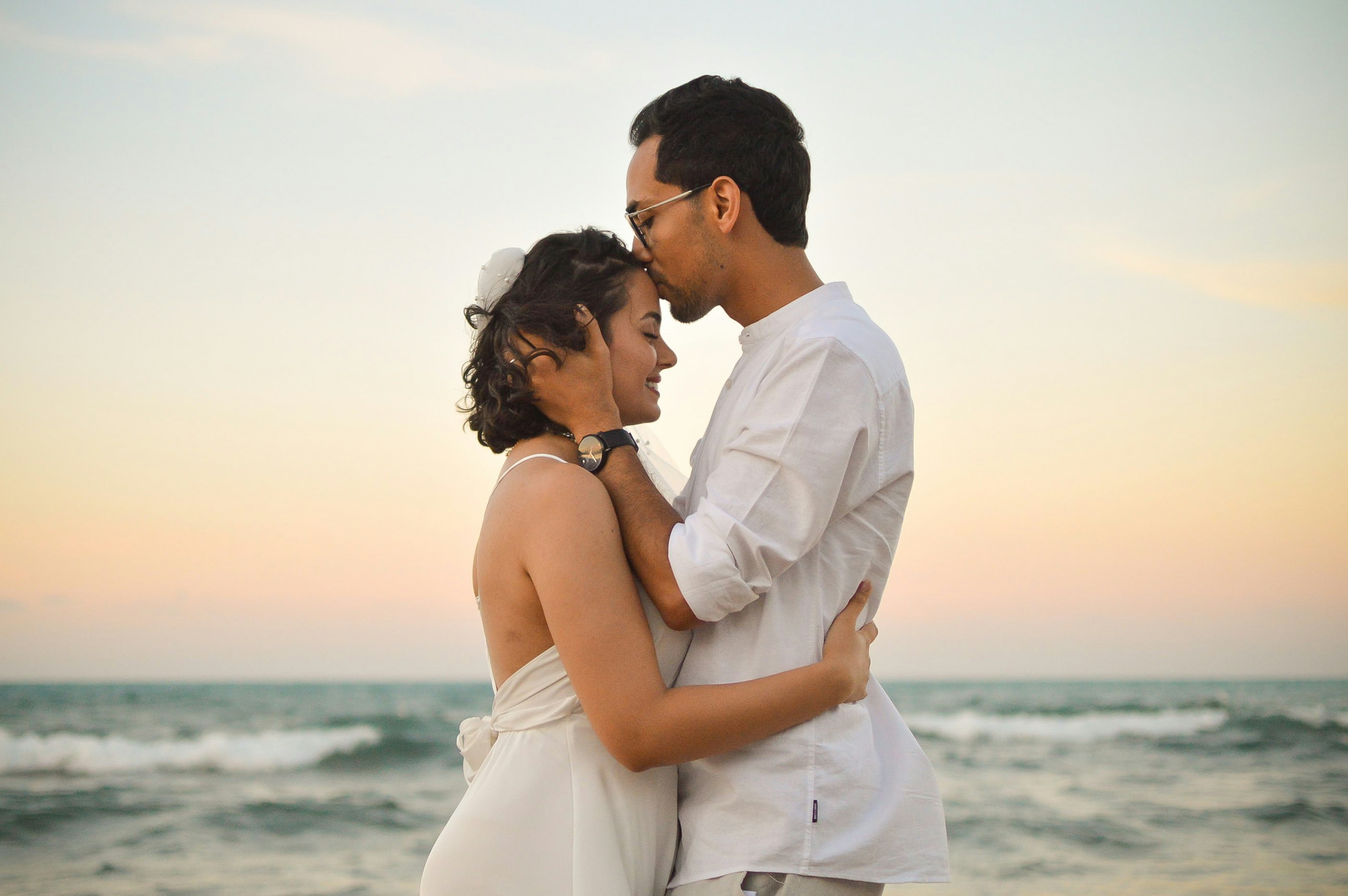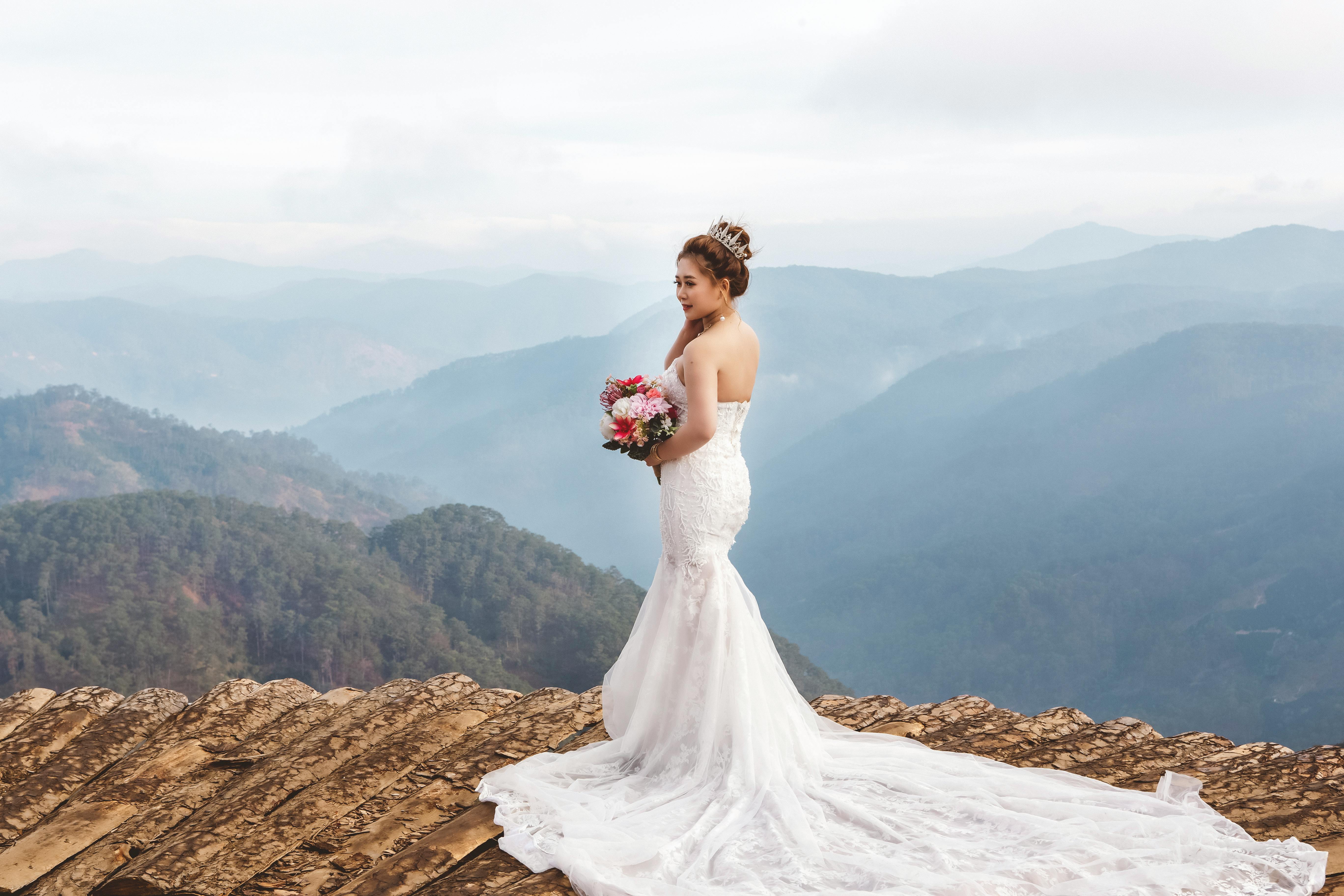6 American Wedding Traditions You Should Know About
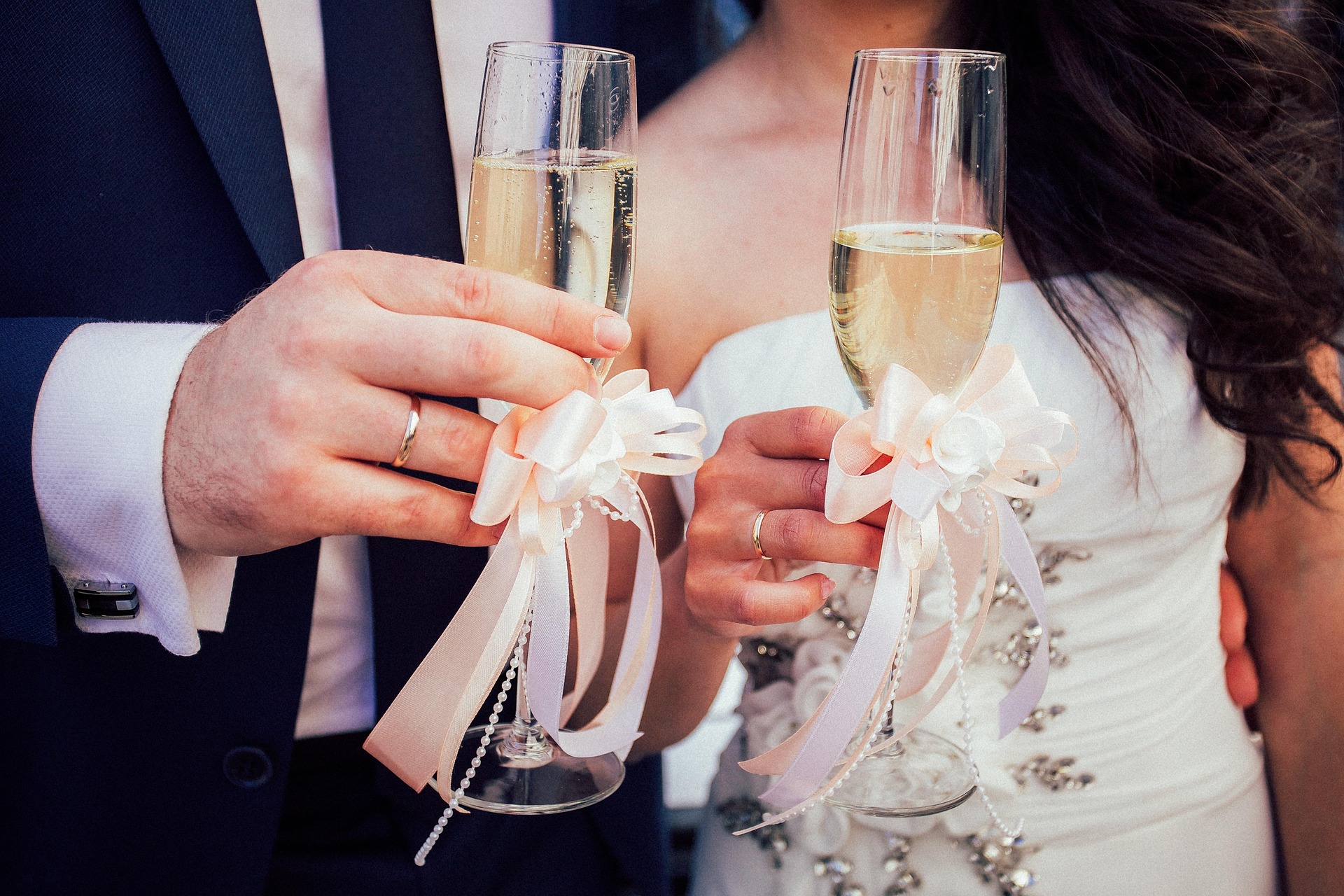
The United States is a large and diverse country, and there is no one “right” way to mark a wedding. Customs fluctuate on a spectrum that runs from couple to couple, background to background, religion to religion and culture to culture. Throughout the country, there are couples that follow centuries-old traditions, while others make up their own, all of which leave a lasting impression on their most important day.
That doesn’t mean, however, that there aren’t some classic traditions that still play a role in the majority of American weddings. Wedding cakes, first dances and ceremonial processionals are classic traditions you are likely to witness. Most receptions even include sophisticated send-off for the newlyweds.
To learn more about some of these traditions, we grilled wedding and events planner Helen Dawson, who has spent over 30 years helping loved-up couples to mark the occasion. Dawson takes us from historical origins to contemporary interpretations, and provides insight into why these traditions continue to endure.
Below, six American wedding traditions that are as relevant as ever.
White Wedding Dress

Even before their husbands-to-be even enter the room, many brides imagine what they’ll wear on their wedding day—and more often than not, it’s white. "It's one of the most iconic traditions in an American wedding, that classic white wedding gown," Dawson says. “It’s the dress that you wear at the ceremony, the reception or both.”
This tradition actually began in England in the 19th century. Queen Victoria made the white dress a hit when she wore a dove-tailored silk and lace dress for her extravagant wedding's public debut. The look captured the public’s imagination and brides have been wearing white ever since. Yet today, many select tones such as ivory or even just add pops of color via accessories, or perhaps embroidery, to achieve a personalized look.
The Wedding Party
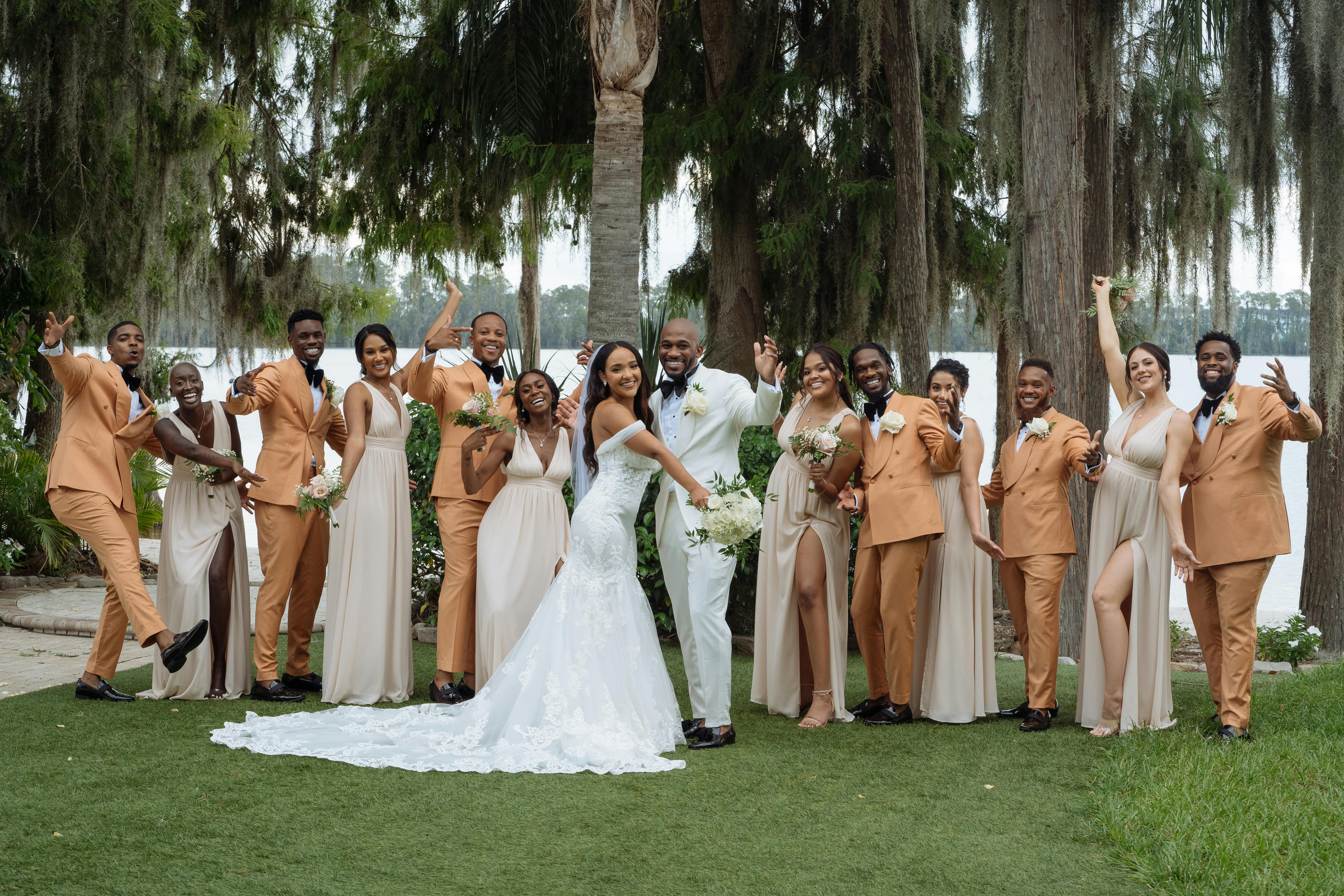
Regardless of their traditions, most couples have a wedding party. “It’s not uncommon at all to have the wedding party both at the ceremony and reception,” Dawson says. “They also help organize events like bachelor and bachelorette parties.”
Contemporary couples select their wedding party as a reflection of their personal relationships (sib-lings, close friends, those connec-tions that go all the way to the matching t-shirts with your childhood bestie). But that wasn’t always so. “Bridesmaids started in Ancient Rome,” explains Dawson. “Ten legal witnesses were called for and these women were not necessarily close to the bride. They dressed to look alike to confound evil spirits and safeguard the pair.”
The Wedding Processional
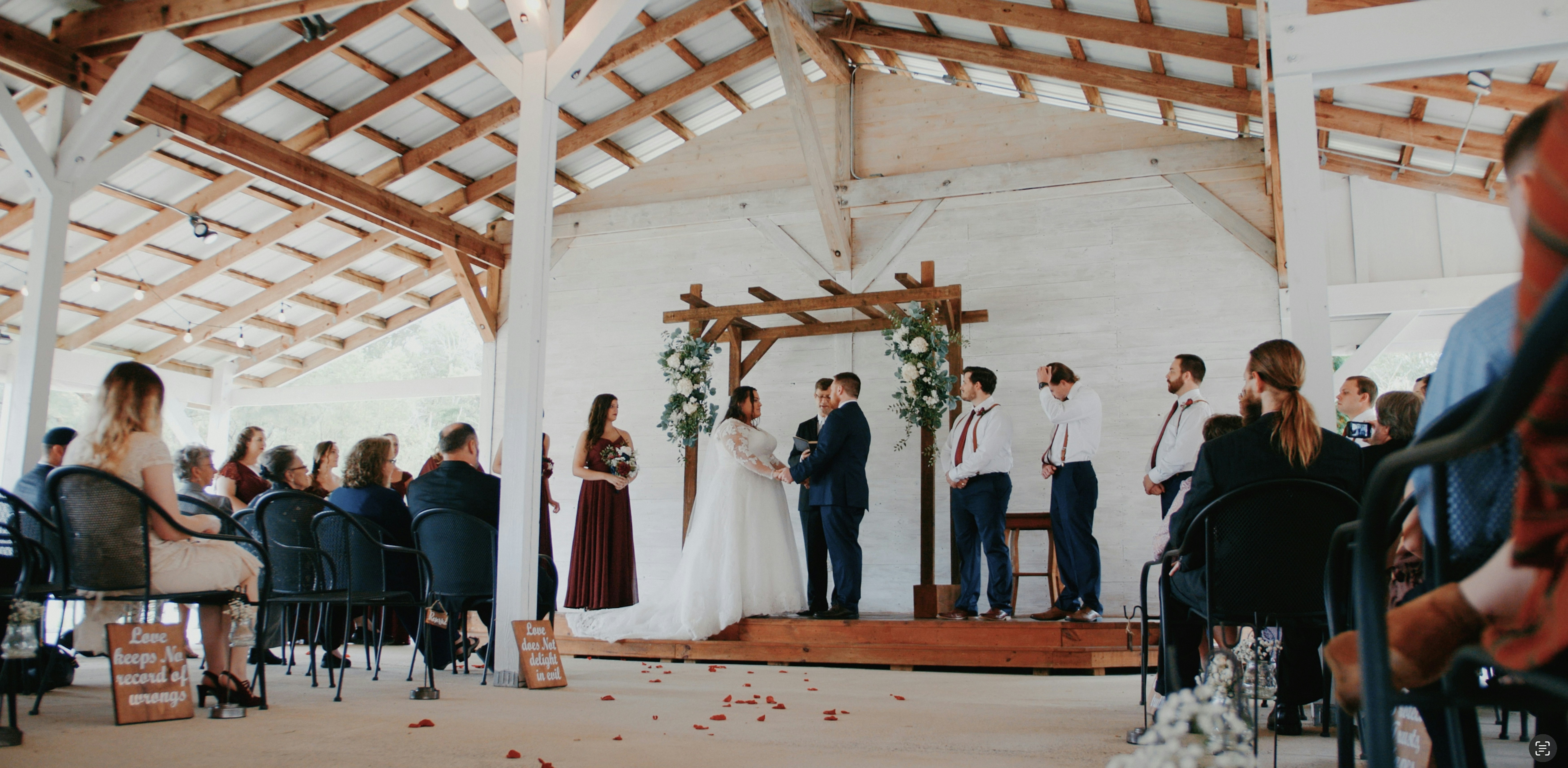
A processional, in most American weddings, sets the ceremony in motion. This one involves the wedding party walking solemnly down the aisle in proper order — officiant first and attendants last, with the flower girls and ring bearers bringing up the rear. The pair and their parents go last.
The bride’s father typically escorts her down the aisle, but plenty of modern lovefests include both parents or someone particularly dear to the bride walking together. This tradition too takes its lead from British royal weddings; it began after Queen Victoria’s daughter married.
The First Dance
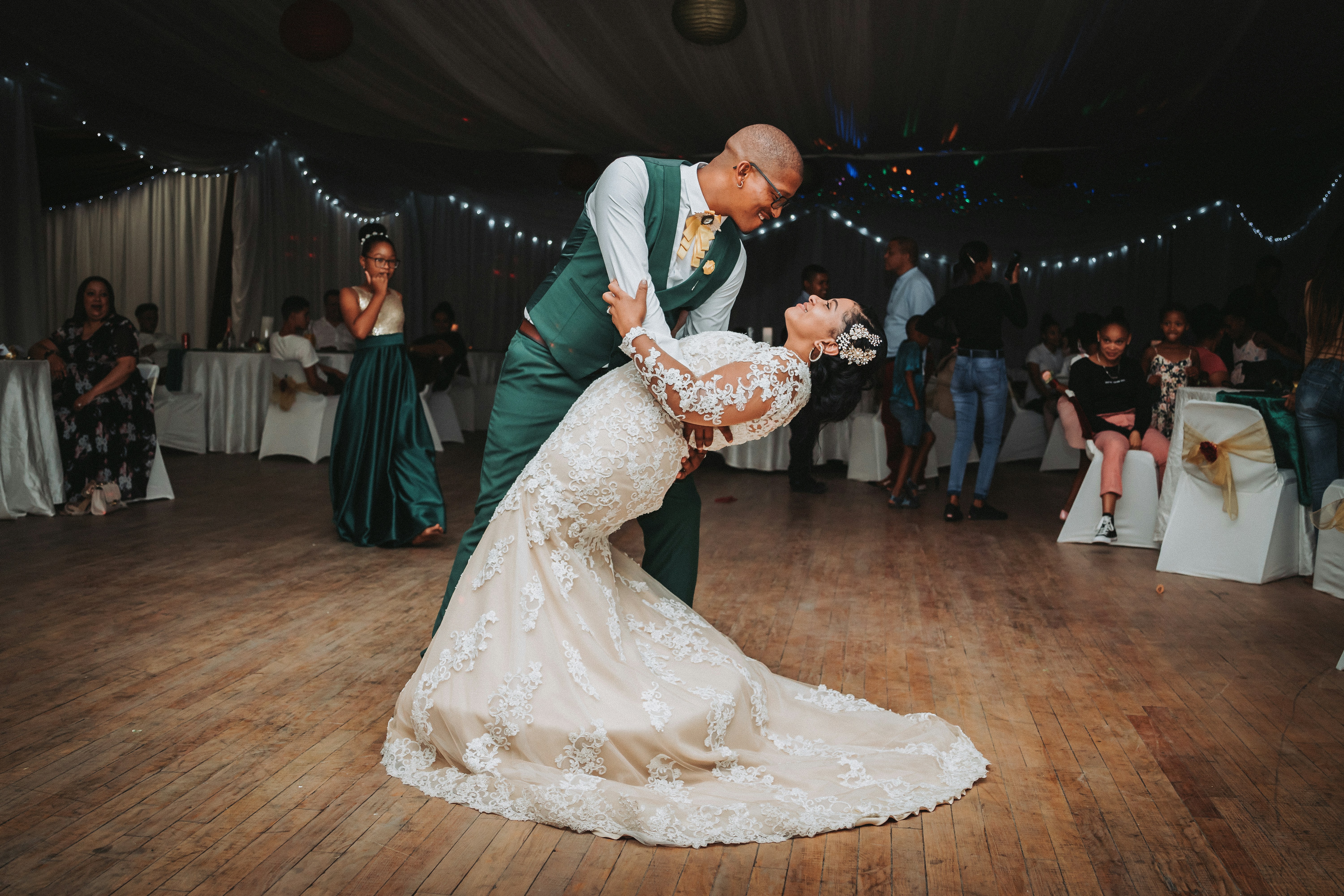
The first dance is still a wedding reception highlight for many couples. When the bride and groom hit the floor, it's their first "public" appearance as newlyweds. Some choose a traditional slow dance, while others end up shocking guests with a lineup and a choreographed dance.
The tradition is aristocratic in its origins. In the 1700s, European nobility would start formal balls with a first dance that was led by the guest of honor. Today, the pair now fill that role themselves—with pride.
The Wedding Cake

The wedding cake is the centerpiece of the celebration, according to Dawson. “It’s not only the flavor. Cutting the cake and feeding each other a slice is a big moment — sometimes involving a teasing spread of frosting.”
The custom goes back to Ancient Rome, in which attendees of the wedding would shatter barley cakes or wheat scones above the bride’s head to signify fertility. During the Middle Ages, people would bake pastries and challenge the couple to kiss over the tower without knocking it over – a promise of future luck if the challenge was met.
Even today, many couples choose a traditional tiered cake, while others turn to creative ideas, such as cupcake towers or dessert bars, instead.
A shower of rice after the bride and groom!
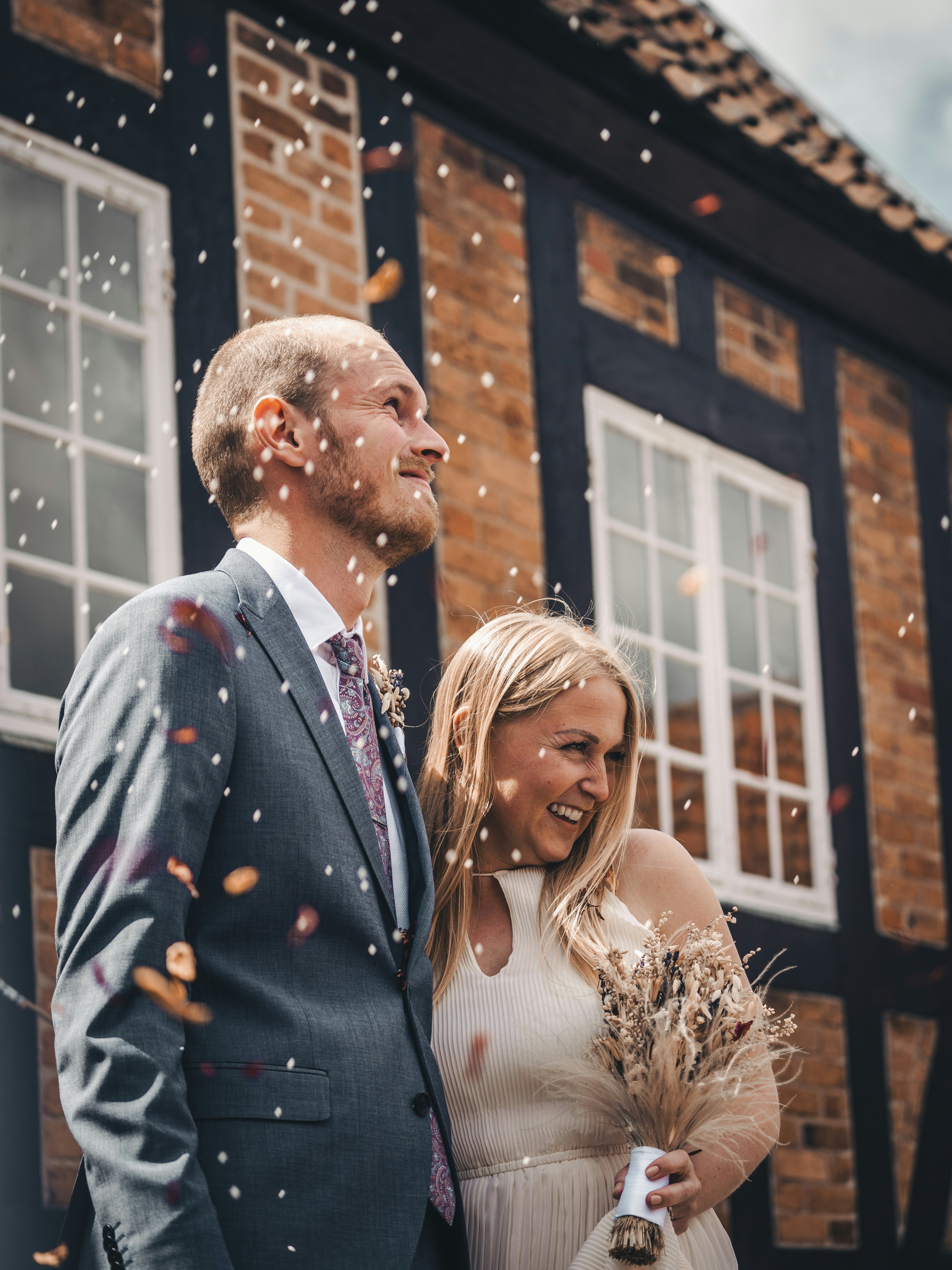
A celebratory send-off is one of the most timeless ways to cap off an American wedding. And while guests used to pelt couples with rice as they made their whooping exit, the options are now as varied as they are environmentally sound. “Now you have people waving sparklers, blowing bubbles or throwing dried petals,” Dawson says.
This practice, too, goes back to Ancient Rome. “Wheat-throwing was symbolic of fertility,” explains Dawson. Rice emerged as the favored supplement, thought to repel evil and to ensure prosperity.
Whether it’s a white dress, a cake-cutting ceremony or a “fun” first dance — these customs are still beloved components of many American marriages. Yet as couples continue to modify them to fit their own sensibilities, the significance behind each ritual continues to tether today’s weddings to centuries of love stories.
